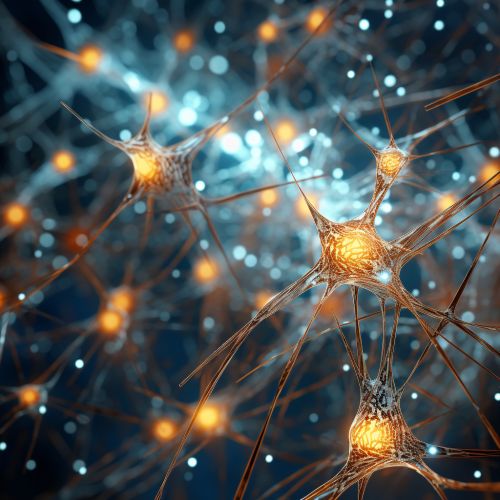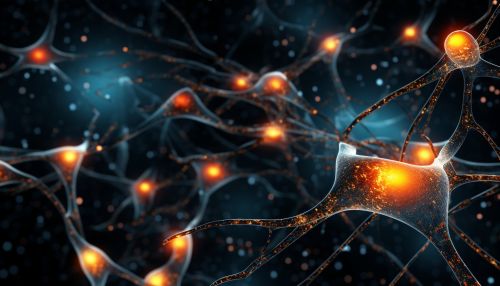Synaptic Pruning
Overview
Synaptic pruning is a neurological regulatory process, which facilitates the removal of unnecessary synaptic connections in the brain. This process is crucial for the development and maturation of a child's brain, but also continues throughout adulthood. It is a key component of neural plasticity, the brain's ability to reorganize itself by forming new neural connections throughout life.
Biological Mechanism
The process of synaptic pruning is initiated by glial cells, specifically microglia and astrocytes. These cells identify and mark the less active or weaker synapses for removal. This is often determined by the level of activity or the strength of the synapse. The marked synapses are then engulfed and digested by the glial cells, effectively pruning them from the neural network.


Role in Development
During the early years of life, the brain undergoes a period of 'synaptic exuberance' where it produces more synapses than it needs. This overproduction is followed by synaptic pruning, allowing the brain to retain only the most useful and efficient connections. This process is influenced by both genetic and environmental factors, and plays a critical role in shaping the individual's cognitive abilities and behavior.
Clinical Significance
Abnormalities in synaptic pruning have been associated with several neurological and psychiatric disorders. Over-pruning, for instance, has been implicated in schizophrenic disorders, where it may lead to a loss of essential synaptic connections. On the other hand, under-pruning is associated with disorders like autism, where an excess of synapses may lead to neural noise and impair cognitive function.
Current Research
Current research in the field of synaptic pruning is focused on understanding the precise mechanisms that regulate this process, and how these mechanisms can be targeted for therapeutic interventions in various neurological disorders. This includes the study of various molecules and pathways involved in synaptic pruning, as well as the role of immune system in this process.
